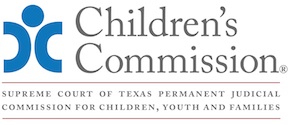
Texas Child Protection Law Bench Book
Updated September 2025
B. Data on Dual Status Youth
National studies provide some insight of the intersect between youth who experience both the child welfare system and the juvenile justice system. Children and youth who experience abuse or neglect are at a 47% greater risk of being juvenile justice involved, compared to the general population.[291] Females and African American youth are overrepresented among youth involved in both the child welfare and juvenile justice systems compared to their peers with involvement in one of these systems.[292] Among youth involved in both systems, 92% first experience the child welfare system then become juvenile justice involved.[293] Although prevalence is hard to quantify and dependent on the definition used for the population, it is estimated that 45-75% of first-time juvenile petitions involve dual system youth.[294] Involvement in both the child welfare and juvenile justice systems is associated with higher risks for mental health, education, and vocation challenges as well as higher rates of recidivism, longer stays in detention, placement instability, and poor permanency outcomes.[295]